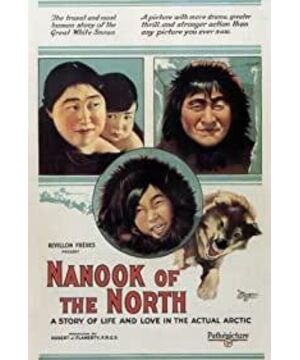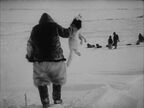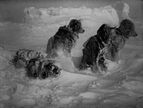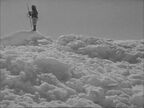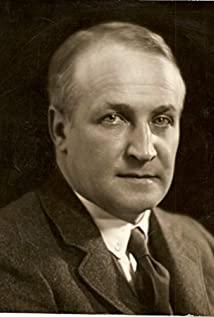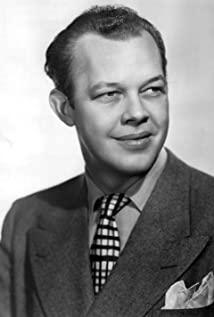as the originator of the documentary, maybe Flaherty did not have the intention, so many of the principled things of the documentary have not been able to persist in his works. However, this black-and-white silent film released in 1922 is still very interesting, and we have to admit its success. However, in my opinion, the most exciting part of the film is its narrative. The following author will briefly analyze how "Nanuk of the North" tells the story.
In an unfortunate accident, all the films of Flaherty going deep into the North Pole were burnt, and Flaherty finally decided to return to the North Pole for a second shooting creation. But it is precisely because of this second time that Flaherty realizes that the material he shot for the first time is too much and too scattered. So in the second shooting, Flaherty decided to use one protagonist, one main line, and one theme, abandoning the previous "travel-style" general shooting method, and focusing on a small point of a family, so, a A new way of filming a documentary has emerged. Flaherty chooses to have a deep understanding of and contact with the subject, and does not use his own voice to manipulate the narrative of the entire film, but chooses to wait for the story, follow the shooting, and show the real life of the characters in the film, rather than the screen constructed by the director's imagination. Life. Simple stories and real records came into being, and the cultural complex of a marginalized nation was finally revealed in modern society through this documentary film.
The era in which Flaherty lived was the era of the rise of feature films, and the use of narrative techniques, scenes, and editing in films was also becoming more and more mature. This makes Flaherty also unconsciously introduce the narrative method of feature films into "Nanuk of the North". In the film, the scene changes are rich, the audience's viewpoint transition is also very flexible, and the editing method is used to make the film's story structure more compact. For example, in order to go to the market where the Nanook family exchanges goods with white people, they need to sew seal skins first and then travel long distances to reach them. In the sewing of the sealskin, Flaherty used a close-up shot to show the look and movements of their sewing, while in the scene where the family had to walk a long way, Flaherty accurately chose the long-range view, The Nanook family moved from left to right in a line in a line, showing the picture of them walking on the long road vividly. There is also a shot of Nanook rowing a boat in the ice floes alone, and it shows the audience the courage and skill of the sand boat from multiple perspectives such as the side, front and back. In addition, simple montage use has appeared in Nanook of the North. For example, Nanouk and his companions hunted walruses, using a cross montage to show humans approaching the walrus step by step, while showing the walrus group resting comfortably by the sea, and a "sentry" looking around vigilantly, suddenly Created a tense atmosphere. For another example, in the construction of Igloo, Flaherty used a parallel montage to show the footage of Nanook building an igloo and children playing and skiing together to the audience. The two clues were carried out at the same time.
When Flaherty tells each paragraph, it is not simply pieced together, but consciously structured and slowly unfolded. The part of hunting walruses is obviously not a simple record and a simple narrative, but first shows the scenery of walruses swimming for their own use in the sea. The link between these two shots constitutes the narrative. Let us know that these few people have targeted the free-standing walrus on the sea, and the story is about to begin. Flaherty carefully arranges the climax of the story to engage the audience. When people finally captured the 2-ton walrus with great strength, Flaherty did not forget to give this poor prey a close-up shot. In the silent film era, directors opted to use subtitles instead of necessary commentary. Flaherty also has careful arrangements for the subtitles. For example, the subtitles "Then, the suspense begins" when hunting walruses, and the subtitles "Wait a minute, there is one more thing" when building Igloo, all the while attracting the audience's desire to continue watching.
To be a good documentary, the prerequisite is to have an attractive beginning. Even the black-and-white silent film Nanook of the North, Flaherty gave it an interesting beginning. This is mainly due to the use of long lenses. At the beginning of the film, the Nanook family magically emerges from a small canoe one by one, which makes people feel magical and funny, because it is difficult to imagine that such a small canoe can hold so many people. If this long shot is cut into pieces, the audience will inevitably doubt its authenticity. They will think that the director has done an artistic treatment here. In fact, this little canoe can't hold so many people at all. There is also a scene where Nanook hunts a seal alone, which also uses a long shot. Nanook is pulled over by the seal for a while, and then tries to stand up and pull the seal out. After a very difficult tug of war, during this period Although the lens has not changed, the audience will not feel boring, because the content of the picture is already very rich at this time, and there is no need to add superfluous words and editing. Not changing the lens for a long time is also more able to show the slow passage of time when Nanook and the seals are fighting.
"Nanuk of the North" mainly tells the following stories: exchange with white people - fishing - catching walruses - eating walruses - traveling through uneven snow - hunting arctic foxes - building igloos - - Playing with son - getting up in the morning - Naila bathing baby - dog fighting - hunting seals - child playing - feeding dog food - going home - sleeping - dog howling outside the house. It can be seen that the whole film makes the rhythm of the film patchwork through the arrangement of the story paragraphs, which is slow and comfortable. The white swap is an entertaining scene, followed by some consciously fraught hunting tension. After the tension, there will be family scenes such as playing with the son. It can always make the audience's emotions get a certain buffer and rest. Gotta say it's smart. The documentary also aids the narrative through a combination of music and images. When fishing, Nanouk held two walrus teeth in his hand, and the rhythm of the rhythm was exactly in line with the rhythm of the music, which matched the rhythm of the film and aroused the audience's interest.
Finally, Flaherty ends with the Nanook family sleeping peacefully in the Igloo after a busy day for food. This is the first time the film has systematically shown the entire day of the Nanook family's life. Precious record value. Outside the house, the Nanok's dogs were curled up and asleep in the blizzard. "The howl of the head dog has the melancholy of the north", Flaherty also wanted to create a humanistic care and atmosphere for the audience at the end. Let the film gradually fade away in the lamentation of the north...
View more about Nanook of the North reviews


